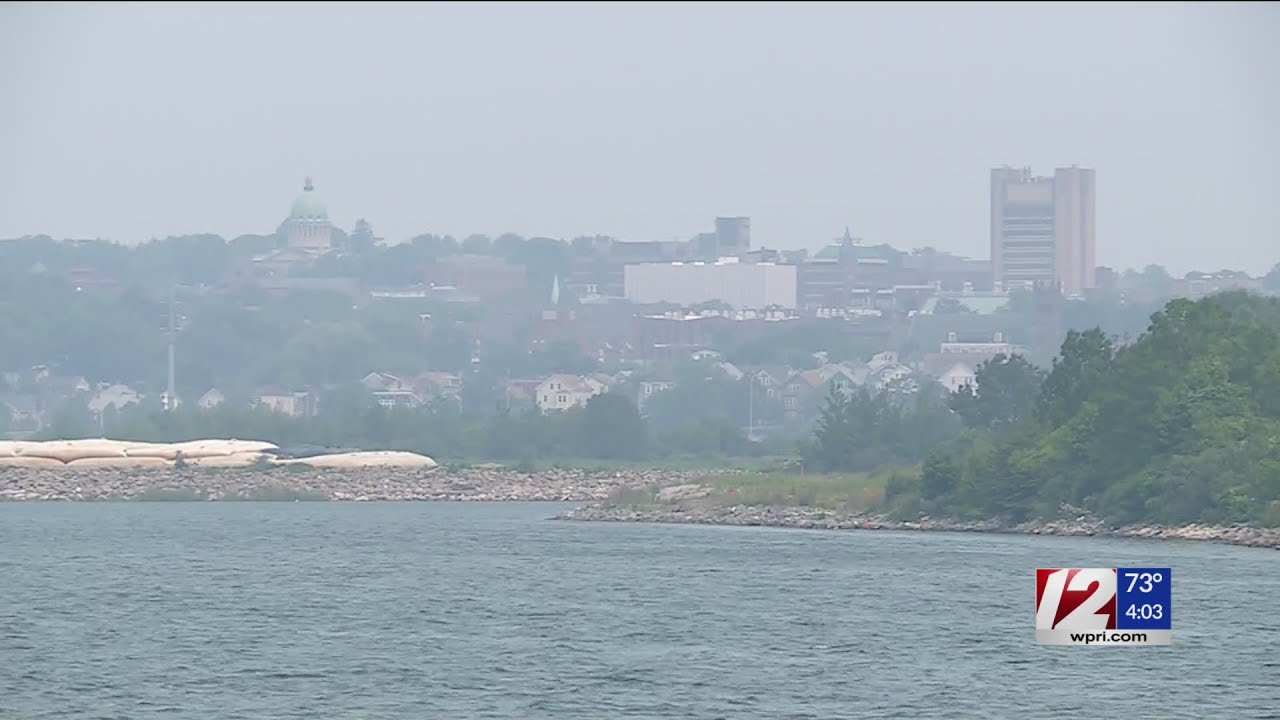Rhode Island’s Air Quality Overview
Rhode Island, the smallest state in the United States, enjoys relatively good air quality. However, like many other developed regions, it is not entirely free from air pollution. The state’s air quality is influenced by various factors, including its geographical location, weather patterns, and human activities. Rhode Island’s predominantly urban landscape with concentrated population centers also contributes to certain air quality challenges. Despite these factors, the state government and various organizations are actively working to monitor, maintain, and improve air quality across Rhode Island.
Factors Affecting Air Quality in Rhode Island
Several factors contribute to the air quality in Rhode Island. One primary factor is the state’s geographical location along the northeastern coast of the United States. It is influenced by the prevailing wind patterns, which can carry pollutants from both local and regional sources. Rhode Island’s proximity to major urban centers and industrial areas in the Northeast corridor also increases the potential for pollution transport.
Weather conditions also play a significant role in air quality. Temperature inversions, where a layer of warm air traps pollutants close to the ground, can occur during calm and cool weather. These inversions can hinder the dispersion of pollutants, leading to poor air quality. Additionally, Rhode Island’s coastal location makes it prone to sea breezes, which can help disperse pollutants and improve air quality.
Human activities, such as transportation, industrial emissions, and residential combustion, are major contributors to air pollution in Rhode Island. Vehicle emissions, in particular, are a significant source of pollutants, especially in densely populated areas. Other factors include power generation, industrial processes, and residential activities like wood burning.
Monitoring Air Quality in Rhode Island
Rhode Island has a robust air quality monitoring system to assess pollution levels across the state. The Rhode Island Department of Environmental Management (DEM) operates a network of air monitoring stations strategically located throughout the state. These stations collect real-time data on various pollutants, including ozone, particulate matter, carbon monoxide, nitrogen dioxide, and sulfur dioxide.
The DEM monitors air quality according to both federal and state regulations. The data collected from the monitoring stations are regularly analyzed and shared with the public. This enables policymakers and environmental agencies to make informed decisions to protect and improve air quality.
Rhode Island’s Air Quality Standards
Rhode Island follows air quality standards set by the United States Environmental Protection Agency (EPA). These standards define acceptable levels of pollutants in the air to protect human health and the environment. The EPA sets National Ambient Air Quality Standards (NAAQS) for six major pollutants, including ozone, particulate matter, carbon monoxide, nitrogen dioxide, sulfur dioxide, and lead. Rhode Island must meet these standards to ensure a safe and healthy environment for its residents.
Additionally, Rhode Island has its own state-specific standards to address air quality concerns unique to the state. These standards are designed to complement federal regulations and provide additional protection for Rhode Island’s air quality.
Common Air Pollutants in Rhode Island
Rhode Island experiences various air pollutants, including ozone, particulate matter, carbon monoxide, nitrogen dioxide, and sulfur dioxide. Ozone is a gas pollutant formed by the reaction of sunlight with pollutants emitted by vehicles, power plants, and industrial processes. Particulate matter consists of tiny particles suspended in the air, originating from combustion processes, industrial emissions, and natural sources like dust and pollen. Carbon monoxide is primarily produced by the incomplete combustion of fossil fuels, especially in vehicles. Nitrogen dioxide and sulfur dioxide are released mainly from burning fossil fuels and industrial emissions.
Health Impacts of Poor Air Quality in Rhode Island
Poor air quality in Rhode Island can have significant health impacts on residents. Exposure to high levels of pollutants can lead to respiratory problems, such as aggravated asthma, bronchitis, and other respiratory infections. Long-term exposure to air pollution has been linked to increased risks of heart disease, lung cancer, and premature death. Vulnerable groups, including children, the elderly, and individuals with pre-existing respiratory or cardiovascular conditions, are particularly at risk.
Initiatives to Improve Air Quality in Rhode Island
Rhode Island has implemented several initiatives to improve air quality and reduce pollution. The state government, along with environmental organizations, promotes clean energy and the use of renewable resources. Encouraging the adoption of electric vehicles and supporting public transportation helps reduce vehicle emissions. The state also offers incentives and grants for energy-efficient technologies in industries and residential areas. Furthermore, Rhode Island actively participates in regional collaborations to address cross-border air quality challenges.
Rhode Island’s Air Quality Index (AQI)
The Air Quality Index (AQI) is a tool used to communicate air quality information to the public in an easily understandable format. The AQI summarizes air quality levels based on the concentrations of major pollutants. Rhode Island utilizes the AQI to provide real-time air quality information to residents. This enables individuals to make informed decisions, such as modifying outdoor activities or taking precautions during poor air quality days.
Major Sources of Air Pollution in Rhode Island
Rhode Island’s major sources of air pollution include transportation, industrial emissions, and residential combustion. Vehicles, including cars, trucks, and motorcycles, are the largest contributors to air pollution in the state. Industrial processes, such as power generation, manufacturing, and chemical production, release a significant amount of pollutants into the air. Residential activities, such as wood burning for heating and cooking, also contribute to pollution levels, especially during the winter months.
Rhode Island’s Efforts to Reduce Vehicle Emissions
Rhode Island has implemented measures to reduce vehicle emissions and promote cleaner transportation. The state encourages the use of electric vehicles by providing financial incentives, including tax credits and rebates. Expanding charging infrastructure for electric vehicles and offering grants for electric vehicle charging stations are some of the initiatives undertaken to facilitate the transition to electric transportation. Rhode Island also promotes the use of public transportation and supports the development of bike lanes and pedestrian-friendly infrastructure to reduce the reliance on individual vehicles.
Rhode Island’s Regulations on Industrial Emissions
To control industrial emissions, Rhode Island has implemented regulations to limit the release of pollutants into the air. The Rhode Island Department of Environmental Management sets emission standards for various industries and requires them to obtain permits to operate. These permits outline specific emission limits and monitoring requirements. The state works closely with industries to ensure compliance and provides assistance in adopting cleaner technologies and practices, ultimately reducing the impact of industrial activities on air quality.
Collaborative Efforts to Protect Rhode Island’s Air Quality
Protecting air quality requires collaborative efforts among various stakeholders. Rhode Island actively collaborates with neighboring states and regional organizations to address air quality challenges. The state participates in regional initiatives, such as the Ozone Transport Commission and the Northeast States for Coordinated Air Use Management. Through these collaborations, Rhode Island shares information, best practices, and coordinates efforts to reduce interstate pollution transport and improve air quality across the region.





